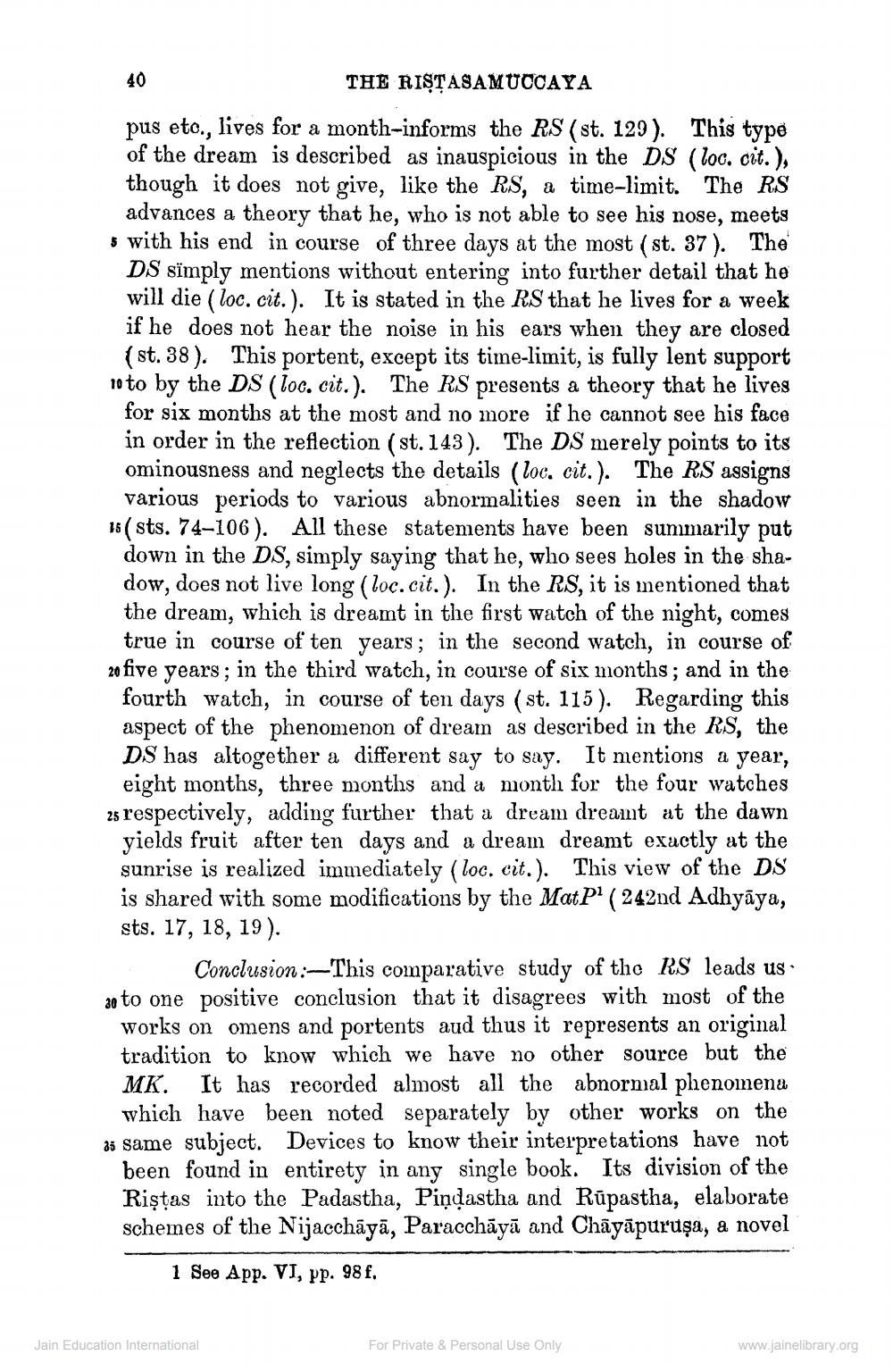________________
40
THE RISTASAMUOCAYA
pus eto., lives for a month-informs the RS (st. 129). This type of the dream is described as inauspicious in the DS (loc. cit.), though it does not give, like the RS, a time-limit. The RS advances a theory that he, who is not able to see his nose, meets s with his end in course of three days at the most (st. 37). The
DS simply mentions without entering into further detail that he will die (loc. cit.). It is stated in the RS that he lives for a week if he does not hear the noise in his ears when they are closed
(st. 38). This portent, except its time-limit, is fully lent support 10 to by the DS (loc. cit.). The RS presents a theory that he lives
for six months at the most and no more if he cannot see his face in order in the reflection (st. 143). The DS merely points to its ominousness and neglects the details (loc. cit.). The RS assigns various periods to various abnormalities seen in the shadow 15 (sts. 74-106). All these statements have been summarily put
down in the DS, simply saying that he, who sees holes in the shadow, does not live long (loc.cit.). In the RS, it is mentioned that the dream, which is dreamt in the first watch of the night, comes
true in course of ten years; in the second watch, in course of 20 five years; in the third watch, in course of six months; and in the
fourth watch, in course of ten days (st. 115). Regarding this aspect of the phenomenon of dream as described in the RS, the DS has altogether a different say to say. It mentions a year, eight months, three months and a month for the four watches 25 respectively, adding further that a dream dreamt at the dawn yields fruit after ten days and a dream dreamt exactly at the sunrise is realized immediately (loc. cit.). This view of the DS is shared with some modifications by the MatP! ( 242nd Adhyāya, sts. 17, 18, 19).
Conclusion:-This comparative study of the RS leads us · za to one positive conclusion that it disagrees with most of the works on omens and portents aud thus it represents an original tradition to know which we have no other source but the MK. It has recorded almost all the abnormal phenomena which have been noted separately by other works on the di same subject. Devices to know their interpretations have not been found in entirety in any single book. Its division of the Riştas into the Padastha, Piņqastha and Rūpastha, elaborate schemes of the Nijacchāyā, Paracchāyā and Chāyāpuruşa, a novel
1 See App. VI, pp. 98f,
Jain Education International
For Private & Personal Use Only
www.jainelibrary.org




